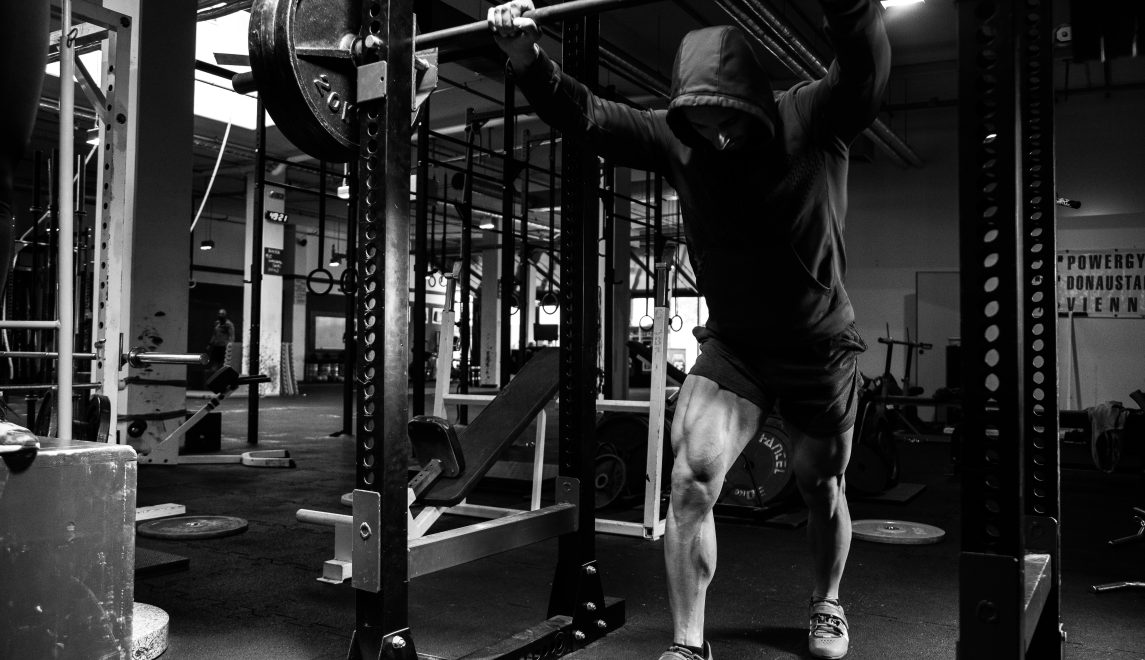Shoulder Health For A Bigger Squat

Squat is one of the most important exercises to master in the gym. Whether you want to be strong, big, athletic or a combination of all three, squat has shown time and again that it can deliver on the pain you put in your work.
The more popular an exercise is, the more misconceptions surround it. Poor comprehension or even just bad interpretation will often lead trainees into the pit trap of “I know how to do this”. Add YouTube tutorials and “fitness experts” to the mix, and you have a recipe for disaster.
A Small Improvement for A Big Effect
To help counter this, this article is going to center on a little-known, 2-part gem to improve your squat almost instantly. As everyone knows, the first thing to do when you squat is to get under the bar and take a solid position. Then, you have to maintain this position in your upper body throughout the exercise while your legs and posterior chain do the work. Too simple, right? The squat is a whole-body exercise; anyone who has ever had a bar on their traps can attest to that. Trunk position is crucial during the setup and the execution. And the simplest way to have a good position of the torso under the bar is to improve your shoulder health. More specifically, there are 2 ways in which a strong, stable shoulder can impact your squat performance.
What is good shoulder health relative to your squat performance? Well, in order to have a healthy shoulder, it is very important to have good upper thoracic mobility, so the scapula can move freely. This will allow proper adduction and retraction in the back, which in turn will give you a chest out posture that comes easily and painlessly. The other factor is having a strong external rotation function of your rotator cuff. This element is related to your grip but also to your posture during the exercise. Let’s explain.
Rigidity And Mobility Go Hand in Hand
Now, the upper thoracic mobility part is easier to conceive. You need to put your chest out and slightly arch your back to maintain good integrity of your squat mechanics while having the weight of a small vehicle on your shoulders. It will help with the stability of the bar on your upper traps. Good mobility will also prevent your chest from caving in when you are in the bottom position due to rising tension in the spine and the surrounding musculature. In fact, one of the common cues to give people who tend to have their hips rise faster than their shoulders or lean forward too much is to “lead with the chest.” This ensures that you work your erector spinae all the way up from the buttocks to your neck.
Of course, having strong rhomboids and mid-trap to maintain the shoulder blades in place during the exercise is also key, but you need to have the mobility to get in position first. Now the topic here is mobility of the upper part of your spine, not necessarily your daily posture. And one does not equate the other. Don’t sweat it if you are slouching at the desk, as long as this posture is not fixed and rigid. If you can achieve a chest out position without having your shoulder come forward and your arms internally rotated, you’re good. One way to know if your shoulders are this way is to puff out your chest while you look into the mirror and look at the crook of your elbows. Do they face forward? Good! Or do they face inward, toward the center of the body? Then you may want to fix this, otherwise your descendants might be the first hominids to go back to walking on all fours
The Shoulder Tip You Never Thought Could Apply To Squat
If this is the case, then our second factor is even more important. You need to work on strengthening your external rotator muscle. This will help push the elbows forward and strengthen the bracing effect of your upper back muscles mentioned earlier. The two muscles in charge of external rotation are the teres minor and infraspinatus, both part of the rotator cuff. Work them in a variety of angles and positions, and make sure to cover multiple rep brackets over different sessions to target them properly.
The stronger your external rotators are, the more you will be able to stabilize the bar by driving your elbows forward during the squat. The increased tension in the upper back and shoulder girdle will feed off each other, which will result in more control on the bar, especially significant in the bottom position.
And since those two factors feed off each other and reinforce one another, working on both at the same time is more efficient, so you will get more bang for your workout buck. Start including exercises for both during your workouts, and your squat will become more efficient
Leave us a comment if you want to know how to easily improve your thoracic mobility and have a stronger rotator cuff.
Until then, squat strong
The Atlantis Strength Editorial Team